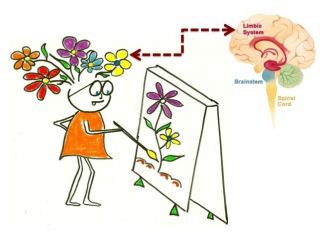
Post published by Patty O'Grady Ph.D. on Apr 06, 2015 in Positive Psychology in the Classroom
I like my student's brain on happy and so will you.
Positive experiences change the brain by making happy connections between the thinking brain and the feeling brain. The more happy connections that survive and thrive... the more learning occurs.
Brain connections hyperlink what we know, what we understand, what we feel, and what we actually do in the world.
Brain-based happiness is not about thinking positivity—it is about feeling positivity.
Positivity nurtures an intrinsic motivation to improve self, hellp others, regulate stress, and balance demands. The positivity effect enables us to reorient ourselves to another' s point of view and consider all options. Feelings of closed-minded opposition are supplanted with open-minded consideration. Feelings beget mindset.
Carol Dwek describes the ideal positivity ratio (take the self-test) as 3-1 positive to negative feelings that create an open-minded mindset. Affective positivity enables the brain to grow into a healthy mind that is open to new ideas and solutions.
Cogntive learning theory proposes that thought predicts action while affective learningtheory proposes that feeling predicts thought. Positive psychology educators, aligned with affective learning, propose that lessons teach and vest emotions, that teachers model and process emotions, and that students express and manage emotions.
The challenge—as in all things educational in this behaviorly static 'reform' era ofeducation—is not to simply recall the 7 happy brain secrets on a test. Rather, the challenge is to practice them daily until the 7 happy brain activities become part of the student's daily muscle or procedural memory.
The 7 secrets of the happy brain assure that the potency of the learning brain is unlocked. At the Learning and Brain Conference in San Francisco last year (February 2014), I presented these 7 secrets of the happy brain for educators.
THE SEVEN SECRETS
1. Prioritize emotions. At every opportunity across every subject discuss, explore, model, and acknowledge feelings. The brain needs advanced education in emotional learning and competency because emotions are the 'back to basics' neurology response, filter, and activator of all knowledge, understanding, and applied skills.
2. Engage strengths. At every opportunity across every subject observe, coach, balance, coordinate, encourage, insist, and embolden positive emotional strengths because emotional strength is just another descriptor of emotional intelligence. The brain is dependent on exquisite emotional synchroncity to reach potency.
3. Envision possibilities. At every opportunity across every subject teach students to construct and deconstruct experience to avoid affective dissonance. The brain is hard-wired for optimsim so teach students how to use their brains to spin straw into gold.
4. Activate positive memory. At every opportunity across every subject engender the positive emotions associated with prior positive experience. The brain is a resevoir of positive emotional experience that can be siphoned to reinvigorate learning as needed.
5. Encourage positive self-narrative. At every opportunity across every subject help students influence or change a student's self-narrative from failure avoiding or failure accepting to a success expecting. The brain is a narrative brain and the stories it tells itself anticipate and predict outcome.
6. Discourage fear. At every opporunity across every subject teach students to relax and feel emotionally safe because fear is at the root of emotional, social, and academic failure. The brain seizes in fear and inhibits new learning because, while fear may force extrinsic compliance, it cannot move the positive emotions that inspire intrinsic motivation.
7. Create flow. At every opportunity across every subject spark innate curiosity and don't interrupt the pursuit of it. The brain is an avid and self-interested learner when new connections are stimulated to grow and flow and obsolete connections discarded.
Now you know how to turn on the happy and make your brain's day!
Quote of the Day: It is the most wondrous thing discovered in the universe, and it is us. David Engelman, Incognito: The Secrets of the Brain
0 comments:
Posting Komentar